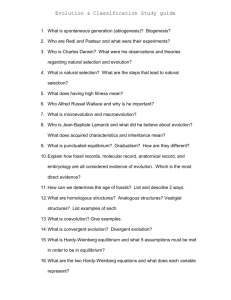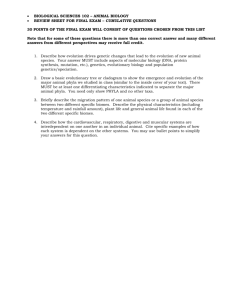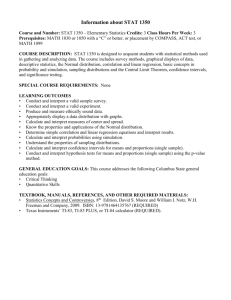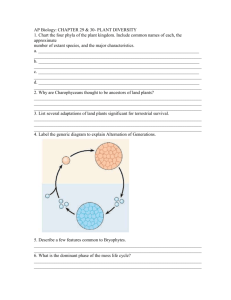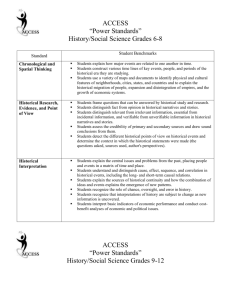Final Exam Review - Fairfield Public Schools
advertisement
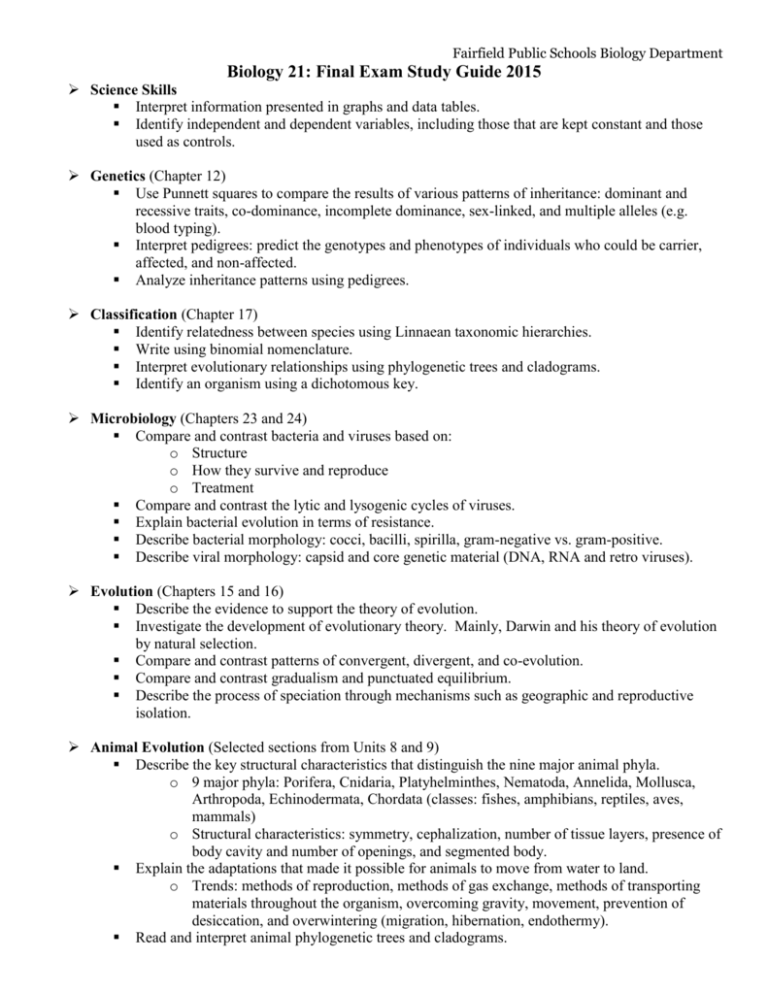
Fairfield Public Schools Biology Department Biology 21: Final Exam Study Guide 2015 Science Skills Interpret information presented in graphs and data tables. Identify independent and dependent variables, including those that are kept constant and those used as controls. Genetics (Chapter 12) Use Punnett squares to compare the results of various patterns of inheritance: dominant and recessive traits, co-dominance, incomplete dominance, sex-linked, and multiple alleles (e.g. blood typing). Interpret pedigrees: predict the genotypes and phenotypes of individuals who could be carrier, affected, and non-affected. Analyze inheritance patterns using pedigrees. Classification (Chapter 17) Identify relatedness between species using Linnaean taxonomic hierarchies. Write using binomial nomenclature. Interpret evolutionary relationships using phylogenetic trees and cladograms. Identify an organism using a dichotomous key. Microbiology (Chapters 23 and 24) Compare and contrast bacteria and viruses based on: o Structure o How they survive and reproduce o Treatment Compare and contrast the lytic and lysogenic cycles of viruses. Explain bacterial evolution in terms of resistance. Describe bacterial morphology: cocci, bacilli, spirilla, gram-negative vs. gram-positive. Describe viral morphology: capsid and core genetic material (DNA, RNA and retro viruses). Evolution (Chapters 15 and 16) Describe the evidence to support the theory of evolution. Investigate the development of evolutionary theory. Mainly, Darwin and his theory of evolution by natural selection. Compare and contrast patterns of convergent, divergent, and co-evolution. Compare and contrast gradualism and punctuated equilibrium. Describe the process of speciation through mechanisms such as geographic and reproductive isolation. Animal Evolution (Selected sections from Units 8 and 9) Describe the key structural characteristics that distinguish the nine major animal phyla. o 9 major phyla: Porifera, Cnidaria, Platyhelminthes, Nematoda, Annelida, Mollusca, Arthropoda, Echinodermata, Chordata (classes: fishes, amphibians, reptiles, aves, mammals) o Structural characteristics: symmetry, cephalization, number of tissue layers, presence of body cavity and number of openings, and segmented body. Explain the adaptations that made it possible for animals to move from water to land. o Trends: methods of reproduction, methods of gas exchange, methods of transporting materials throughout the organism, overcoming gravity, movement, prevention of desiccation, and overwintering (migration, hibernation, endothermy). Read and interpret animal phylogenetic trees and cladograms. Fairfield Public Schools Biology Department Plant Evolution (Selected sections from Unit 7) Describe the key structural characteristics that distinguish the major plant phyla. o 4 major phyla: Bryophytes, Tracheophytes, Gymnosperms, Angiosperms (monocot and dicot) Explain the structural characteristics that made it possible for plants to move from water to land. o Vascular tissues, seeds, development and modification of roots, stems, and leaves, methods of reproduction (including alternation of generations), and prevention of desiccation. Read and interpret plant phylogenetic trees and cladograms. Ecology (Chapters 18, 19 and 20) Distinguish between the abiotic and biotic components in an ecosystem. Trace the interactions among populations of different species within a community in terms of energy flow (food webs, trophic levels) and symbiosis (predation, parasitism, mutualism, commensalism). Describe the factors that affect the carrying capacity of the environment. Explain how population density is affected by emigration, immigration, birth rate and death rate. Compare age structure diagrams for a developed, developing and underdeveloped country. And identify the factors that affect a population’s age structure. Recognize the biosphere is a closed system, nutrients must be recycled (overview of Carbon, Water, and Nitrogen cycle).
